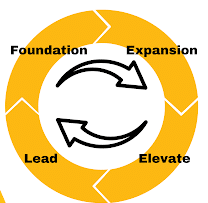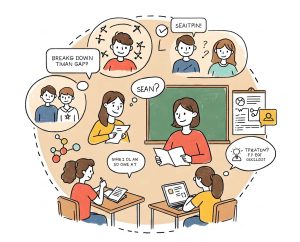by Nataliya Vizir, ILCA Board member
The FEEL Programme was developed to combine theory and practice in a most efficient
way, it emphasizes the flipped classroom model, where trainees come to the session
having already engaged with the preparatory materials. This approach makes learning
flexible and easier to fit into busy schedules of language teachers and allows for deeper
discussions and more interactive learning experiences when they all meet in a live
session. The trainees meet once a week and here’s a sneak peek into a recent 90-
minute session that clearly shows the effectiveness of this model.
Getting started
Just like clients come to a language coaching session between their other assignment,
the FEEL Programme participants have live meetings in-between language lessons,
coaching sessions or other tasks. We started with a simple scaling question, “How
would you measure your preparedness to work in this session on the material covered?
From 1 to 10”. The participants admitted their mind was not here yet, it was still busy
with the thoughts from previous hours’ tasks. To help everyone focus and transition into
the learning mode, we did a quick mindfulness exercise and then measured the scores
again. Just in 2 minutes of so everyone felt more present and ready to work.
Client Preparedness and Mindfulness
The discussion then shifted to the importance of helping clients gain focus at the
beginning of sessions. We discussed the start of sessions, how clients act, where their
focus is. Participants shared their experiences and techniques for redirecting clients’
thoughts to the sessions and had a short discussion on the effectiveness of different
mindfulness practices where they learned from each other’s experiences.
Frameworks and Models in Coaching
The session moved on to discussing the materials of the course module and exploring
the similarities between various coaching frameworks and models, how these
frameworks can be seen as recipes where coaches choose the most appropriate one
for their clients. This analogy helped demystify the selection process and encouraged
participants to experiment with different models to find what works best.
Maintaining Client Focus
The next part of the session addressed the challenge of keeping clients present and
engaged. This appeared to be highly relevant to most participants, especially to those
working with busy executives: clients might come to a language coaching or training
session, start working and then suddenly apologize and answer an urgent call or type a
quick message, etc. We discussed various techniques to help clients stay focused, such
as setting clear expectations and using mindfulness practices. Participants exchanged
tips and ideas, learning from each other’s successes and challenges.
Role of the Coach and Setting Boundaries
This discussion led to reiterating the importance of clarifying the coach’s role in
maintaining session focus and managing distractions. The discussion emphasized the
importance of setting ground rules at the beginning of cooperation and asking for
permission to share observations when clients get distracted. This segment highlighted
the need for clear communication and mutual respect between coach and client.
Microlearning and Shorter Sessions
In the context of information and task overload, we then explored the concept of
microlearning, involving shorter, more focused coaching sessions. Participants
discussed the benefits and challenges of this approach, especially the improved client
focus and retention. They were encouraged to experiment with different session lengths
to find what works best for them and their clients.
Integrating Coaching into Teaching Packages
To answer the question of one of the participants, the session also touched on how to
integrate coaching services into existing teaching packages, providing additional value
to clients and differentiating participants’ offerings. We shared ideas and strategies to
seamlessly incorporate coaching into various teaching contexts.
Clear Communication and Client Preparation
Finally, the importance of clear explanations of the coaching process at the beginning of
the relationship was emphasized. The participants discussed strategies for ensuring
clients understand the process, including double-checking their understanding and
preparing them for the types of questions they might encounter.
Coaching practice and feedback
For the next part of the session, the participants went into break-out rooms for a short
coaching practice and then returned to discuss the outcomes and receive more
questions:
How did it feel being coached?
What did the coach do that helped you move closer toward your goal?
How did you feel coaching your client?
What are you getting better at?
What would you like to work on more / improve?
Some participants noted that this final reflection was most valuable since it highlighted
their progress and helped identify the next steps forward.
Conclusion
This training session is a good example of how the FEEL Programme participants gain
valuable insights and learn techniques to enhance their coaching practices through
interactive discussions, practical activities, and peer learning. The FEEL Programme,
thanks to the flipped classroom approach, allows to focus on practice and exchange of
ideas during live meetings thus creating even more value for the trainees.






